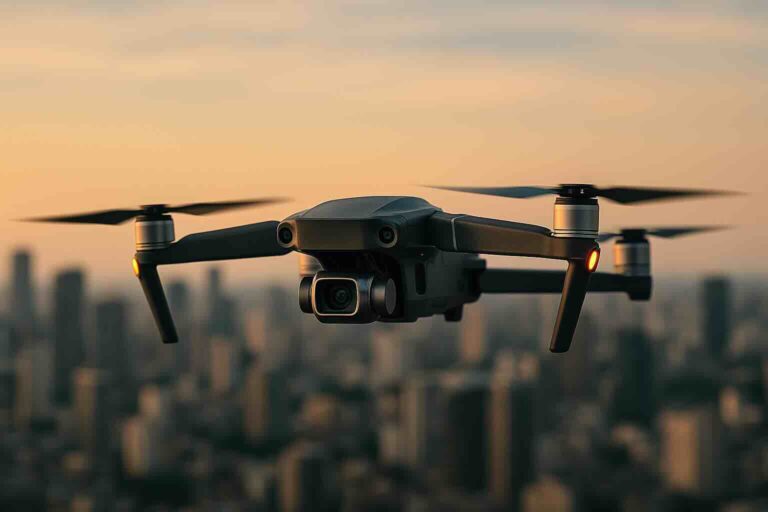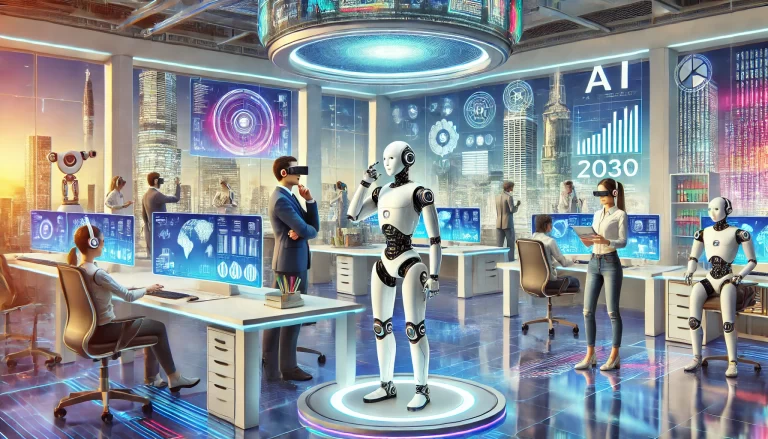As we face growing environmental challenges, technology is stepping up as a critical player in promoting sustainability and reducing our ecological footprint. From renewable energy to sustainable agriculture, tech innovations are transforming our interaction with the planet and offering new solutions to long-standing problems. This article delves into the latest technological advancements aimed at fostering sustainability, showcases case studies and success stories, and predicts future trends in green technology.
Renewable Energy Technologies
Solar Power
Solar power has revolutionized the energy sector by providing a clean, renewable source of electricity. Advances in photovoltaic (PV) technology have made solar panels more efficient and affordable. Innovations like solar roof tiles and flexible solar panels are expanding the applications of solar energy.
Case Study: SolarCity
SolarCity, now part of Tesla, has implemented large-scale solar installations across the United States, significantly reducing carbon emissions. Their Solar Roof integrates seamlessly with existing architecture, demonstrating that sustainable energy solutions can be both functional and aesthetically pleasing. As of 2023, SolarCity’s installations have generated over 9.3 gigawatts of solar capacity, enough to power millions of homes.
Wind Power
Wind power harnesses the natural wind flow to generate electricity. Modern wind turbines are highly efficient and can be deployed both onshore and offshore, contributing to a significant portion of the global energy mix.
Success Story: Hornsea One
Located off the coast of Yorkshire, England, Hornsea One is the largest offshore wind farm in the world. It produces enough electricity to power over a million homes, illustrating the potential of wind energy to meet large-scale power demands sustainably. Since its completion, it has contributed to reducing CO2 emissions by approximately 2.1 million tonnes annually.
Energy Storage Solutions
Energy storage is critical for balancing supply and demand in renewable energy systems. Innovations in battery technology are making it possible to store excess energy generated from renewable sources and use it when needed.
Lithium-Ion Batteries
Lithium-ion batteries are widely used in electric vehicles (EVs) and renewable energy storage systems due to their high energy density and long lifespan. Companies like Tesla are at the forefront of developing large-scale battery storage solutions.
Case Study: Tesla Powerwall
Tesla’s Powerwall is a home battery that stores energy from solar panels or the grid. It provides backup power during outages and helps homeowners manage their energy consumption more efficiently. This technology is pivotal in creating resilient and self-sustaining energy systems. As of 2024, Tesla has installed over 250,000 Powerwalls globally, demonstrating its impact on energy management.
Solid-State Batteries
Solid-state batteries offer improved safety and higher energy density compared to traditional lithium-ion batteries. They are expected to revolutionize the EV market and energy storage industry.
Future Prediction: Solid Power
Solid Power, a leading developer of solid-state batteries, is working on commercializing this technology. Their batteries promise to extend the range of EVs and enhance the safety and efficiency of energy storage systems. The company projects that by 2028, solid-state batteries could become mainstream, significantly reducing the environmental impact of battery production and disposal.
Sustainable Agriculture Technologies
Agriculture is a major contributor to greenhouse gas emissions and environmental degradation. Technological innovations are transforming traditional farming practices, making them more sustainable and efficient.
Precision Agriculture
Precision agriculture uses data analytics, GPS, and IoT devices to optimize farming practices. By monitoring soil conditions, weather patterns, and crop health, farmers can make informed decisions that increase yields and reduce resource use.
Case Study: John Deere
John Deere’s precision agriculture technologies, including GPS-guided tractors and smart irrigation systems, help farmers optimize their operations. These innovations lead to reduced water usage, lower pesticide application, and increased crop productivity. According to John Deere, farms using their technology have seen up to a 25% increase in crop yields and a 30% reduction in resource use.
Vertical Farming
Vertical farming involves growing crops in stacked layers, often in controlled indoor environments. This method reduces land use and water consumption while enabling year-round production.
Success Story: AeroFarms
AeroFarms operates one of the largest vertical farms in the world, located in Newark, New Jersey. Their aeroponic system uses 95% less water than traditional farming and produces crops without pesticides, highlighting the potential of vertical farming to address food security and sustainability. AeroFarms has successfully scaled its operations, providing fresh produce to major supermarkets and urban centers.
Sustainable Transportation
Transportation is a significant source of greenhouse gas emissions. Innovations in electric vehicles, public transportation, and alternative fuels are making transportation more sustainable.
Electric Vehicles (EVs)
EVs produce zero tailpipe emissions and can be powered by renewable energy sources. Advances in battery technology and charging infrastructure are driving the adoption of EVs worldwide.
Case Study: Tesla Model 3
Tesla’s Model 3 is one of the best-selling electric cars globally. Its long range, high performance, and affordability have made EVs more accessible to the mass market, reducing the carbon footprint of personal transportation. As of 2023, over 1.2 million Model 3 units have been sold, contributing to a significant reduction in global CO2 emissions.
Public Transportation Innovations
Innovations in public transportation, such as electric buses and high-speed trains, are reducing the environmental impact of mass transit systems.
Success Story: Shenzhen Electric Bus Fleet
Shenzhen, China, has transitioned its entire bus fleet to electric vehicles, becoming the first city in the world to achieve this milestone. This shift has significantly reduced air pollution and greenhouse gas emissions in the city. The fleet of over 16,000 electric buses eliminates approximately 1.35 million tons of CO2 emissions annually.
Waste Management and Recycling Technologies
Effective waste management and recycling are crucial for reducing environmental pollution and conserving natural resources. Technological innovations are enhancing the efficiency and effectiveness of these processes.
Smart Waste Management
Smart waste management systems use sensors and data analytics to optimize waste collection and recycling. These systems improve the efficiency of waste handling and reduce environmental impact.
Case Study: Bigbelly
Bigbelly’s smart waste and recycling stations use sensors to monitor fill levels and optimize collection schedules. This technology reduces the frequency of waste collection trips, saving fuel and reducing emissions. Cities using Bigbelly systems have reported a 70% reduction in collection frequency and a 50% decrease in operational costs.
Advanced Recycling Techniques
Advanced recycling techniques, such as chemical recycling and AI-powered sorting systems, are improving the recycling rates of complex materials.
Future Prediction: Loop Industries
Loop Industries is developing technology to recycle PET plastic waste into high-quality, food-grade PET resin. Their process breaks down PET plastic into its base chemicals, which can be reused indefinitely, helping to close the loop on plastic waste. By 2030, Loop Industries aims to process over 10 billion PET bottles annually, significantly reducing plastic pollution.
Sustainable Building Technologies
The construction and operation of buildings account for a significant portion of global energy consumption and emissions. Sustainable building technologies are reducing the environmental impact of the built environment.
Green Building Materials
Green building materials, such as cross-laminated timber (CLT) and recycled steel, reduce the carbon footprint of construction projects.
Case Study: The Edge, Amsterdam
The Edge, an office building in Amsterdam, is one of the greenest buildings in the world. It uses sustainable materials, generates its own energy, and features smart systems that optimize energy use, demonstrating the potential of green building technologies. The Edge has achieved a BREEAM rating of 98.36%, making it one of the most sustainable office buildings globally.
Energy-Efficient Building Systems
Energy-efficient HVAC systems, smart lighting, and building automation systems are reducing the energy consumption of buildings.
Success Story: LEED Certification
The Leadership in Energy and Environmental Design (LEED) certification program recognizes buildings that meet high sustainability standards. LEED-certified buildings use less energy, water, and resources, and have lower operating costs, making them more sustainable and cost-effective. As of 2023, over 100,000 commercial projects worldwide have achieved LEED certification.
Future Predictions: The Next Frontier in Sustainable Tech
Looking ahead, several emerging technologies hold the promise of further advancing sustainability efforts:
Artificial Intelligence (AI) for Environmental Management
AI can analyze vast amounts of environmental data to optimize resource use, predict environmental changes, and develop strategies for mitigating climate change. Companies like IBM and Microsoft are investing heavily in AI solutions for environmental management.
Carbon Capture and Storage (CCS)
CCS technologies capture carbon dioxide emissions from industrial sources and store them underground, preventing them from entering the atmosphere. By 2035, the global CCS market is expected to grow to $15 billion, driven by advancements in capture efficiency and storage solutions.
Hydrogen Fuel Cells
Hydrogen fuel cells produce electricity through a chemical reaction between hydrogen and oxygen, emitting only water as a byproduct. They have the potential to revolutionize transportation and energy storage. Toyota and Hyundai are leading the way with hydrogen-powered vehicles, aiming for mainstream adoption by 2030.
Biodegradable Materials
Research into biodegradable materials is paving the way for sustainable alternatives to plastics and other non-renewable materials. Innovations in this field could significantly reduce the environmental impact of packaging and single-use products.
Ocean Cleanup Technologies
Innovations in ocean cleanup technologies aim to remove plastic waste from the oceans, protecting marine ecosystems and reducing pollution. The Ocean Cleanup project, for example, has developed systems to remove plastic from the Great Pacific Garbage Patch and aims to clean up 90% of ocean plastic by 2040.
Conclusion
Tech innovations are playing a critical role in promoting sustainability and reducing environmental impact. From renewable energy and energy storage solutions to sustainable agriculture, transportation, waste management, and building technologies, these advancements are transforming our world. By continuing to invest in and develop these technologies, we can create a more sustainable future for our planet.
The success stories and future predictions highlighted in this article demonstrate the
potential of technology to address some of the most pressing environmental challenges. As we move forward, it is essential to support and adopt these innovations to ensure a healthier, more sustainable world for future generations.












